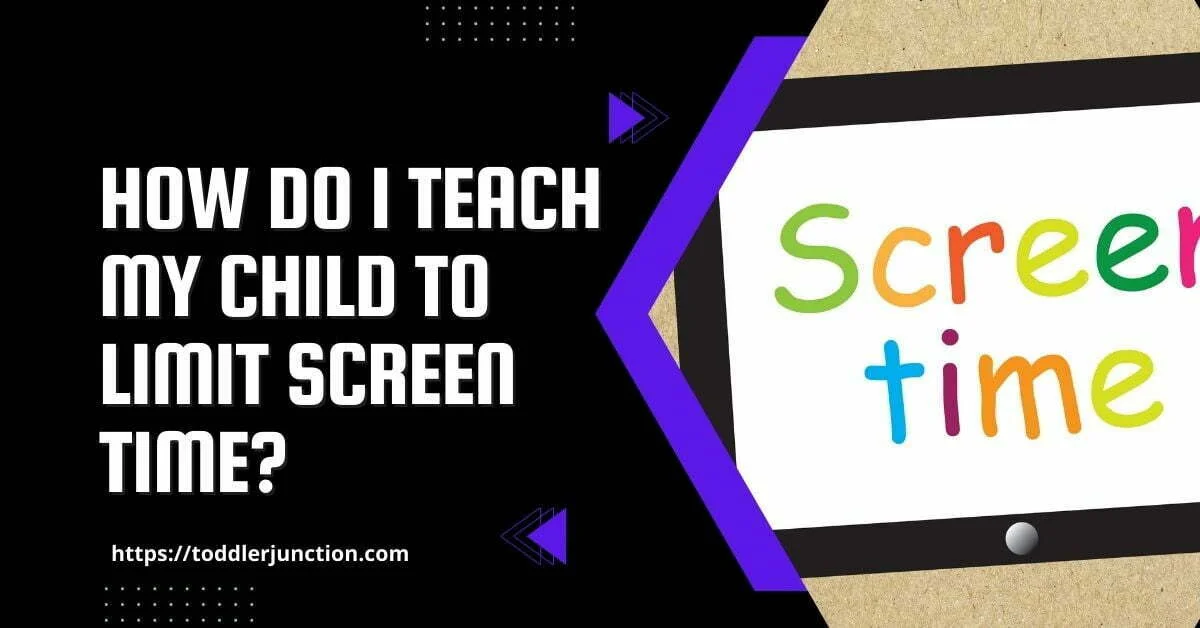In the digital age, screen time dominates many children’s lives, yet as part of their general development, they need to learn to set limits on it. As parents, we want to ensure that our kids have the knowledge and abilities to safely and appropriately utilize technology.
Teaching kids to restrict their screen time can be difficult, but they must understand the dangers of excessive screen time and the value of balancing it with other activities.
In this blog post, we’ll go over some techniques you can use to help your kids learn the value of setting screen time limits and how to strike a good balance between online and offline activities.
Read Here: 13 Healthy Activities for Children Instead of Watching TV
1. Establish a daily schedule
Establishing a daily plan is one of the best strategies to minimize a child’s screen time. This should specify the times the youngster may use their device and the time allotted for each activity.
For instance, you might determine that each activity should have a time limit and that your child should use their gadget for no more than two hours daily.
Consider putting up alerts or reminders to make the plan simpler to follow and adhere to. This will assist your child in staying on task and preventing excessive screen usage.

2. Set guidelines and restrictions
Setting guidelines and restrictions for your child’s screen time is crucial for instilling healthy habits and teaching them the value of moderation.
You might begin by establishing a weekly or daily maximum for the total screen time and particular hours of the day when the displays must be off.
Set limits on the kind of content your child can view and any guidelines you may have for online interactions with others.
Your child will learn that there are healthy boundaries and that they need to be respected if you set clear rules and boundaries for them.

3. Provide alternative activities
Offering your child alternate activities is one of the most effective ways to encourage them to reduce screen time. Interactive exercises like board games, card games, crossword puzzles, and art projects can be a part of this.
Outdoor activities like biking, hiking, playing in parks, and gardening can also be included. Your child’s need for screen time might be decreased by including them in these activities and making them pleasurable.
Encourage them to pick up an old favorite or to try something new. Ultimately, you want to provide them with activities that keep them occupied and away from screens.

4. Monitor and enforce the rules
After establishing boundaries for your child’s screen time, it’s crucial to keep an eye on them and uphold the rules. Apply clear and consistent penalties for disobeying the rules, and enforce the regulations consistently.
Setting up a system of rewards and penalties for adhering to the rules can assist in keeping your child on track. Regularly check how much time they spend on screens and make any rule adjustments.
A great technique to make sure your child stays within the boundaries you’ve established is to let them know their screen time is being monitored.

5. Involve the child in the discussion
The key to teaching a youngster to limit their screen time is to involve them in the conversation. Be sure to listen to the child’s opinions when you ask them how long they would like to play each day.
Tell them why you think a certain period of time is suitable and invite their input as you try to reach an understanding. They will feel more in control of their time and be better able to appreciate the significance of the limitations as a result.
Being involved in the process will help you and the child develop a bond of trust and understanding, which is essential in any relationship.

Conclusion
Parenting involves teaching kids to set reasonable screen time limits. The outcomes are worthwhile, but time, effort, and patience are needed.
In addition to keeping kids away from screens, encouraging them to engage in other activities like reading, sketching, or playing will also help them acquire crucial life skills.
A key component of limiting screen time is educating kids about the possible dangers of excessive screen time, setting clear boundaries and guidelines, and offering them alternatives.


